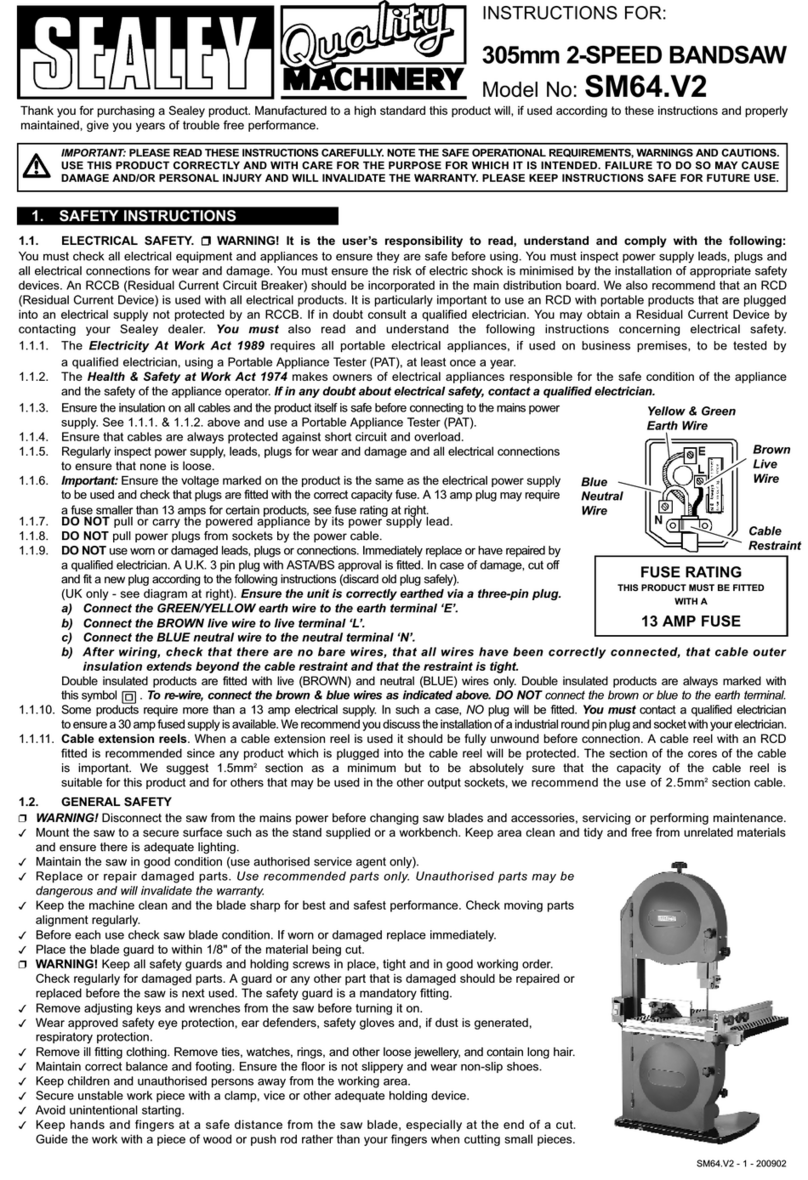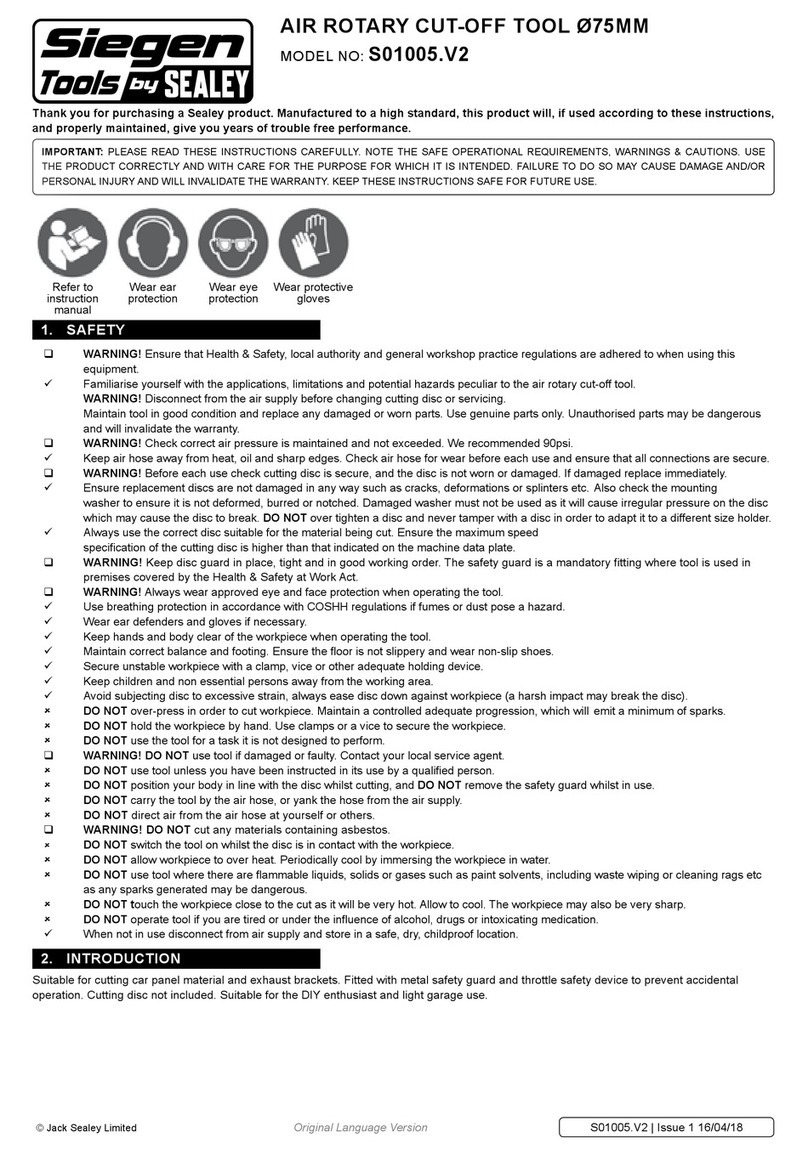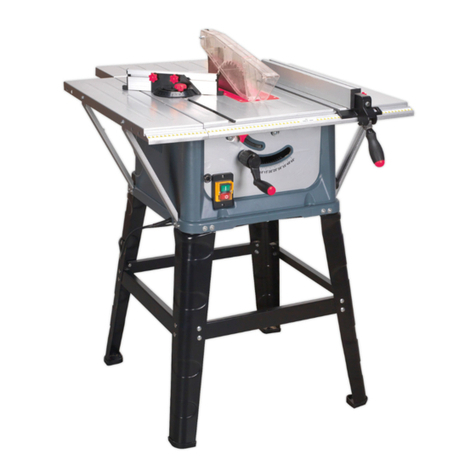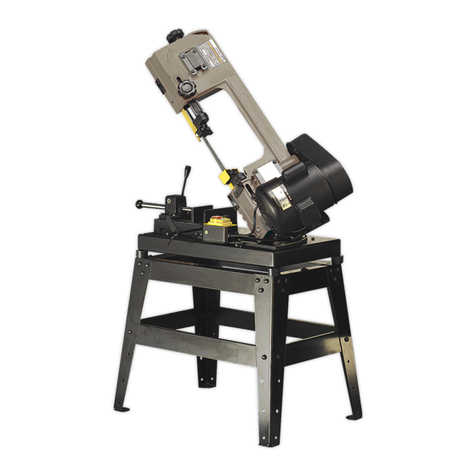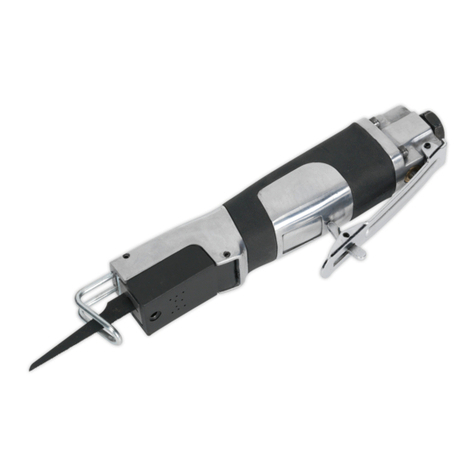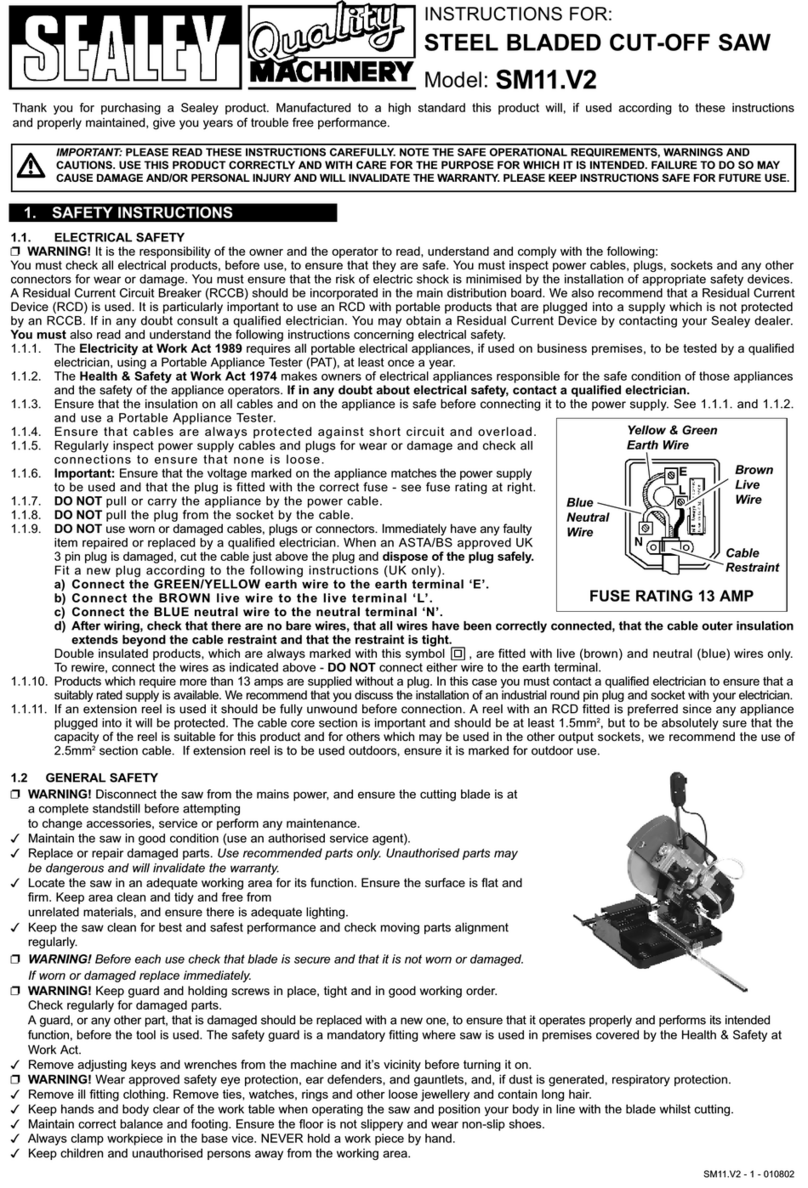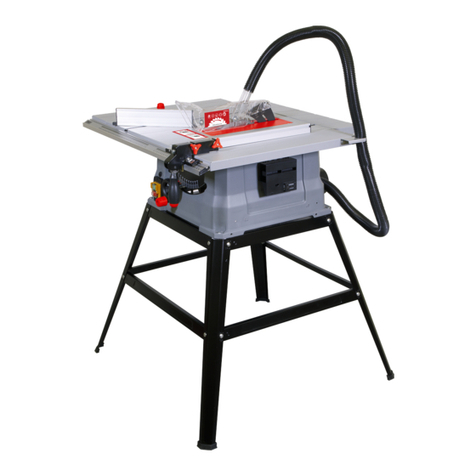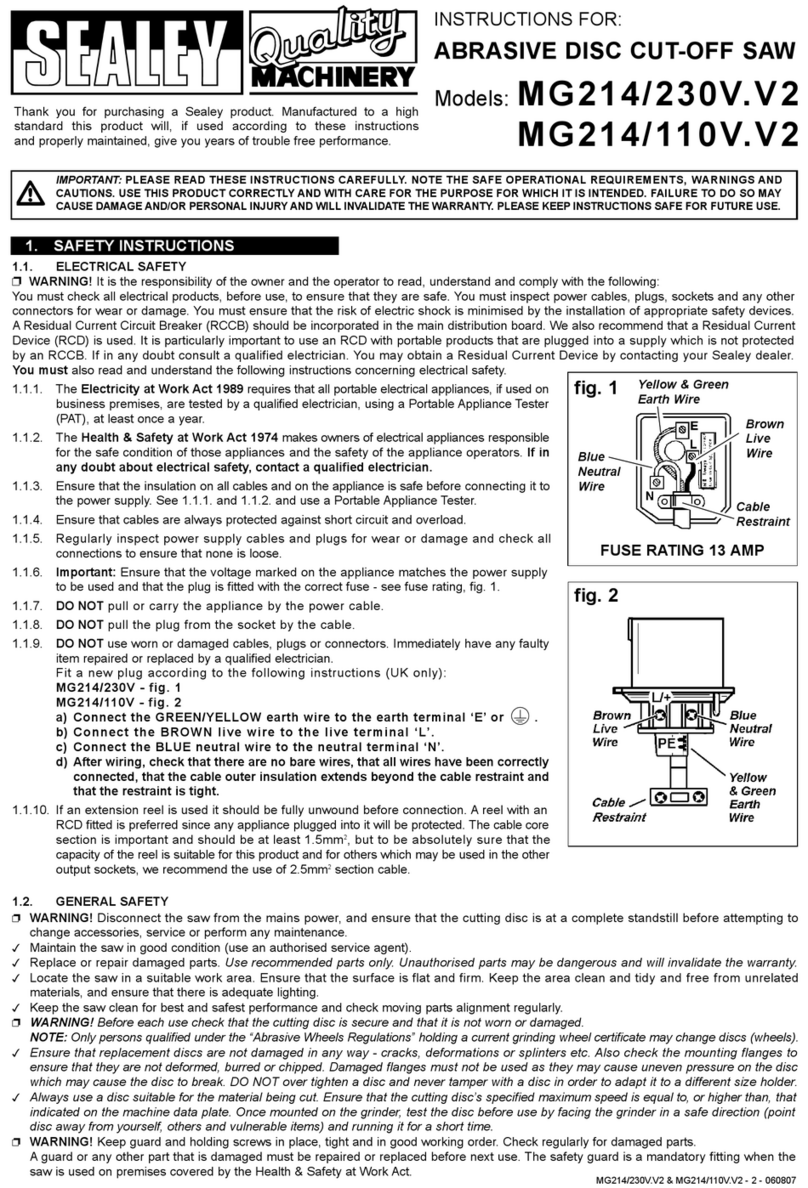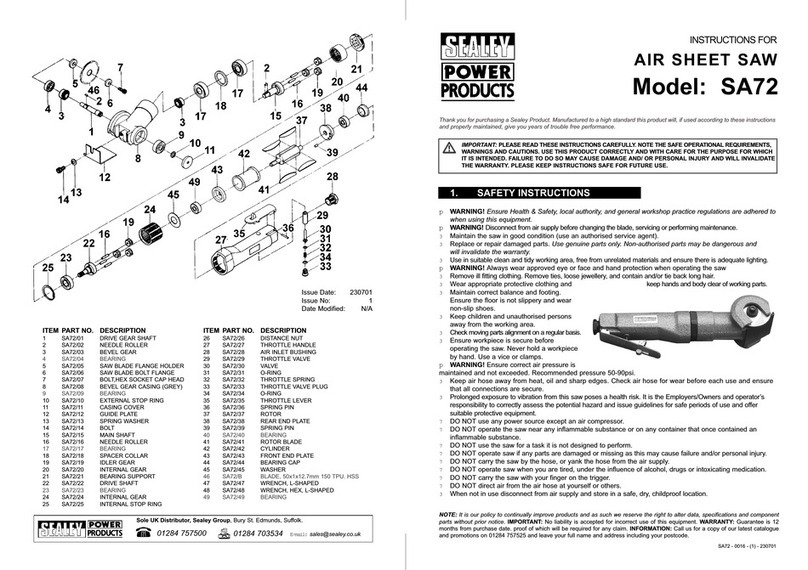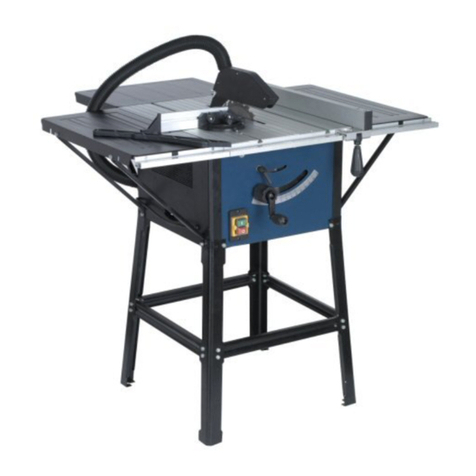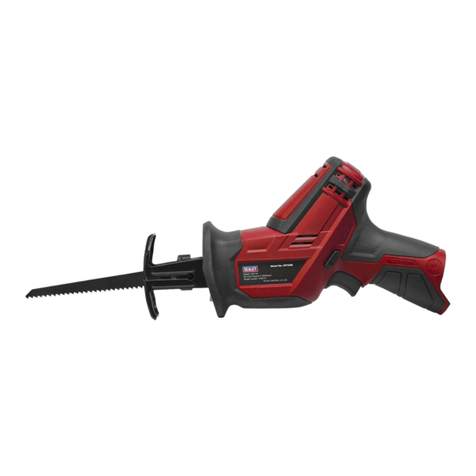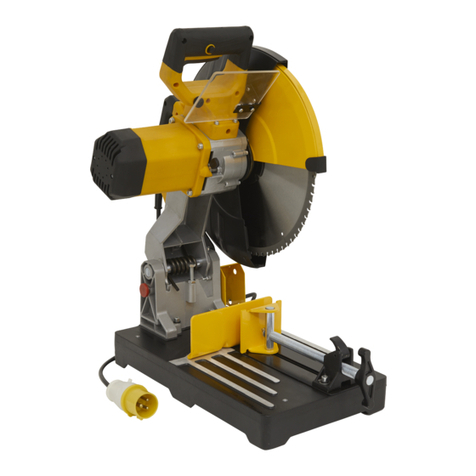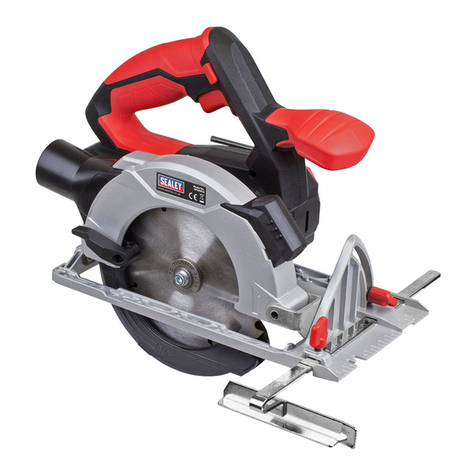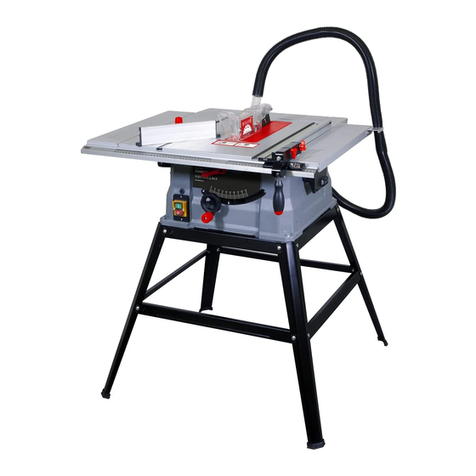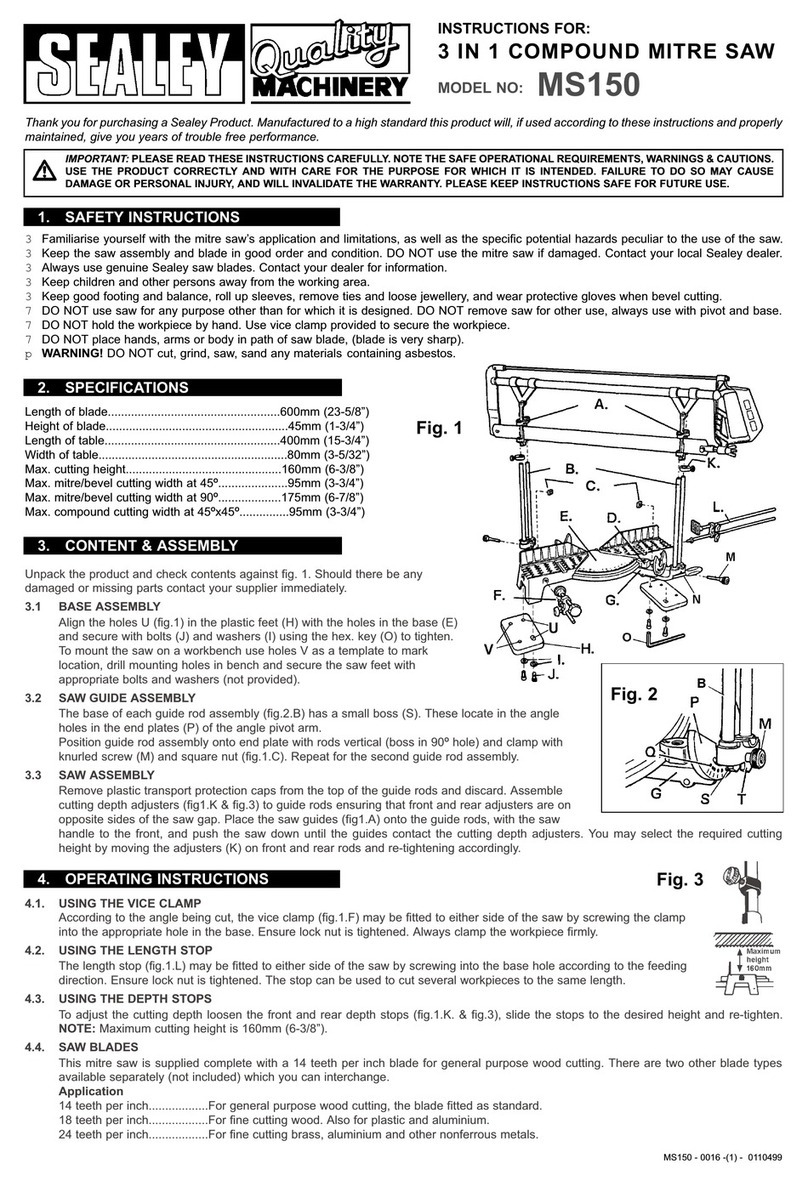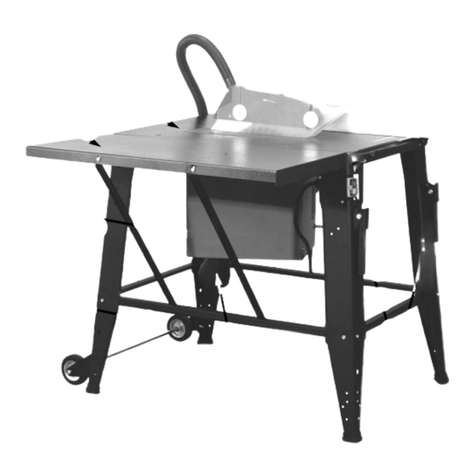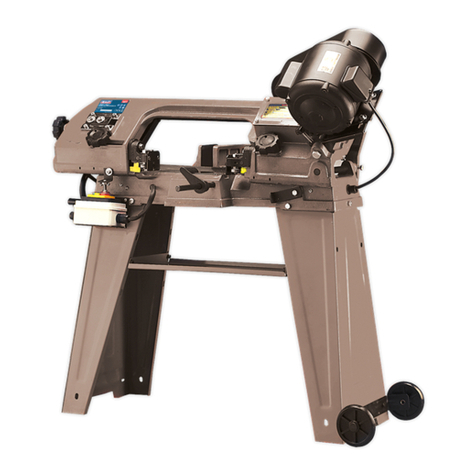
INSTRUCTIONS FOR:
STEEL BLADED CUT-OFF SAW
Model: SM300
Thank you for purchasing a Sealey product. Manufactured to a high standard this product will, if used according to these instructions
and properly maintained, give you years of trouble free performance.
1. SAFETY INSTRUCTIONS
IMPORTANT: PLEASE READ THESE INSTRUCTIONS CAREFULLY. NOTE THE SAFE OPERATIONAL REQUIREMENTS, WARNINGS AND CAUTIONS.
USE THIS PRODUCT CORRECTLY AND WITH CARE FOR THE PURPOSE FOR WHICH IT IS INTENDED. FAILURE TO DO SO MAY CAUSE
DAMAGE AND/OR PERSONAL INJURY AND WILL INVALIDATE THE WARRANTY. PLEASE KEEP INSTRUCTIONS SAFE FOR FUTURE USE.
1.2. GENERAL SAFETY
pWARNING! Disconnect the saw from the mains power and ensure that the cutting blade is at a complete standstill before attempting to change
accessories, service or perform any maintenance.
3Maintain the saw in good condition (use an authorised service agent).
3Replace or repair damaged parts. Use recommended parts only. Unauthorised parts may be dangerous and will invalidate the warranty.
3Locate the saw in a suitable work area. Keep the area clean and tidy and free from unrelated materials and ensure that there is adequate lighting.
3Keep the saw clean for best and safest performance and check moving parts alignment regularly.
pWARNING! Before each use check that the blade is secure and that it is not worn or damaged. If worn or damaged replace immediately.
pWARNING! Keep guard and holding screws in place, tight and in good working order. Check regularly for damaged parts.
A guard, or any other part, that is damaged must be repaired or replaced, to ensure that it operates properly and performs its intended function,
before the tool is next used. The safety guard is a mandatory fitting where saw is used in premises covered by the Health & Safety at Work Act.
3Remove adjusting keys and wrenches that are on or near the machine before turning it on.
pWARNING! Wear approved safety eye protection, ear defenders and gauntlets, and, if dust is generated, respiratory protection.
3Remove ill fitting clothing. Remove ties, watches, rings and other loose jewellery and contain long hair.
3Keep hands and body clear of the work table when operating the saw and position your body in line with the blade whilst cutting.
3Maintain correct balance and footing. Ensure the floor is not slippery and wear non-slip shoes.
3Always clamp the workpiece in the base vice. NEVER hold a work piece by hand.
3Keep children and unauthorised persons away from the working area.
3Avoid subjecting blade to excessive strain, always ease blade down against workpiece (a harsh downward impact may break the blade or
teeth). Do not apply undue force on the handle in order to cut workpiece. Maintain a controlled cutting speed through the workpiece.
pWARNING! DO NOT switch the saw on whilst the blade is in contact with the workpiece. Bring the rotating blade to the workpiece.
3Avoid un-intentional starting of the saw.
7DO NOT hold the workpiece by hand. Use base vice to secure the workpiece.
7DO NOT leave the saw operating unattended.
7DO NOT use the saw for a task it is not designed to perform.
7DO NOT allow untrained persons to operate the saw.
7DO NOT get the saw wet or use in damp or wet locations or areas where there is condensation.
pWARNING! DO NOT use saw where there are flammable liquids, solids or gases such as petrol, paint solvents, waste wiping rags etc.
7DO NOT operate the saw if any parts are missing or damaged as this may cause failure and/or personal injury.
7DO NOT remove the safety guard whilst the saw is in use.
7DO NOT attempt to remove a workpiece until the blade has stopped rotating.
7DO NOT touch the workpiece close to the cut as it will be very hot. Allow to cool.
7DO NOT operate the saw when you are tired or under the influence of alcohol, drugs or intoxicating medication.
3When not in use switch off the saw and isolate from the power supply.
SM300 - (3) - 100203
1.1. ELECTRICAL SAFETY
p WARNING! It is the responsibility of the owner and the operator to read, understand and comply with the following:
You must check all electrical products, before use, to ensure that they are safe. You must inspect power cables, plugs, sockets and any other
connectors for wear or damage. You must ensure that the risk of electric shock is minimised by the installation of appropriate safety devices.
A Residual Current Circuit Breaker (RCCB) should be incorporated in the main distribution board. We also recommend that a Residual Current
Device (RCD) is used. It is particularly important to use an RCD with portable products that are plugged into a supply which is not protected
by an RCCB. If in any doubt consult a qualified electrician. You may obtain a Residual Current Device by contacting your Sealey dealer.
You must also read and understand the following instructions concerning electrical safety.
1.1.1. The Electricity at Work Act 1989 requires that all portable electrical appliances, if used on business premises, are tested by a qualified
electrician, using a Portable Appliance Tester (PAT), at least once a year.
1.1.2. The Health & Safety at Work Act 1974 makes owners of electrical appliances responsible for the safe condition of those appliances
and the safety of the appliance operators. If in any doubt about electrical safety, contact a qualified electrician.
1.1.3. Ensure that the insulation on all cables and on the appliance is safe before connecting it to the power supply. See 1.1.1. and 1.1.2.
and use a Portable Appliance Tester.
1.1.4. Ensure that cables are always protected against short circuit and overload.
1.1.5. Regularly inspect power supply cables and plugs for wear or damage and check all connections to ensure that none is loose.
1.1.6. Important: Ensure that the voltage marked on the appliance matches the power supply
to be used and that adequate circuit protection is provided - see right.
1.1.7. DO NOT pull or carry the appliance by the power cable.
1.1.8. DO NOT pull the plug from the socket by the cable.
1.1.9. DO NOT use worn or damaged cables, plugs or connectors. Immediately have any faulty
item repaired or replaced by a qualified electrician.
1.1.10. Products which require more than 230V/13A are supplied without a plug. In this case you must contact a qualified electrician to ensure that a
suitably rated supply is available. We recommend that you discuss the installation of an industrial round pin plug and socket with your electrician.
415V CIRCUIT PROTECTION
SUPPLY MUST INCORPORATE
16 AMP PROTECTION

